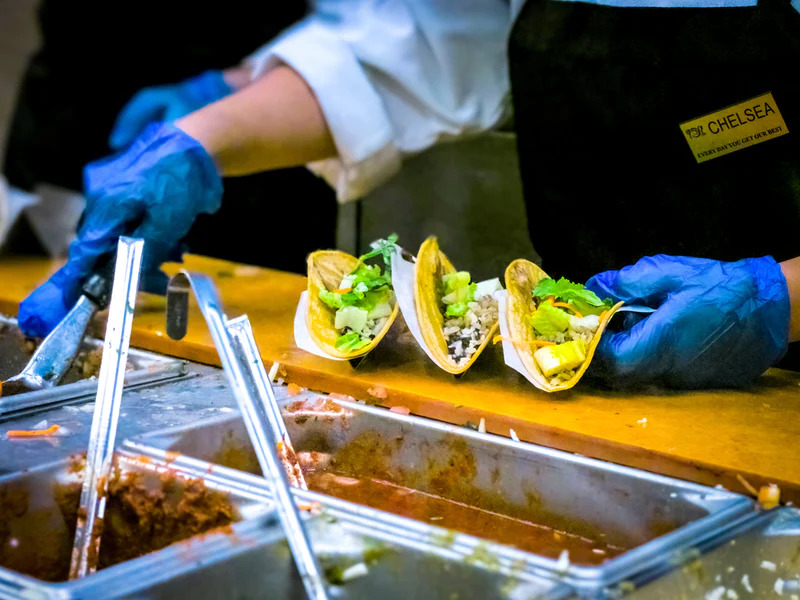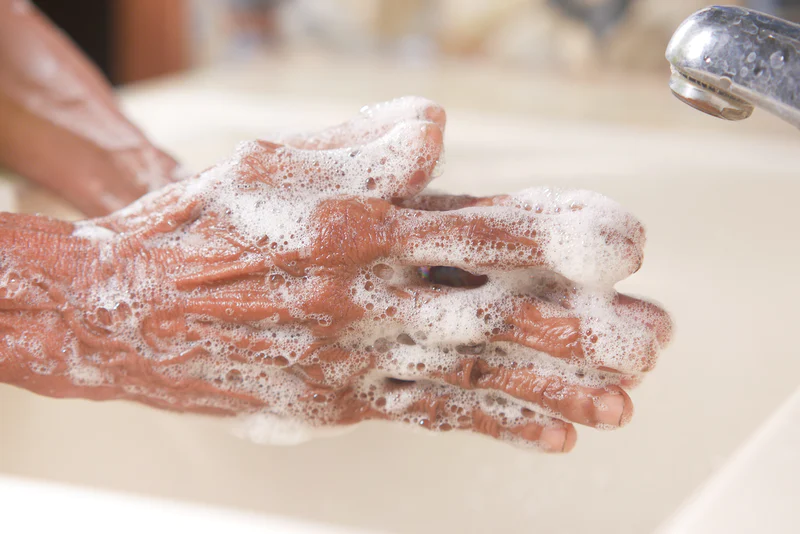7 Steps to Food Safety HACCP for Food Businesses [With Steps & Examples]

What is HACCP?
Hazard Analysis and Critical Control Points (HACCP) is a food safety management system which helps workers identify safety hazards when handling food and take precautions to prevent hazardous incidents from occurring. This system reassures customers, the general public, and regulatory agencies, that your food is safe to consume.
Food businesses, like food producers, restaurants, catering companies, and food retail businesses, must use this system to ensure food safety.
Identify Potential Hazards and Conduct a Hazard Analysis (HA)
You and your team need to identify all potential microbiological, chemical, physical and allergenic hazards related to the handling of food within your business, as it’s important that everyone recognises the signs of food contamination. Once your team has identified all potential hazards, you should list, characterise and detail the source or cause of any hazards, such as setting a temperature that could contaminate.
You then need to assess the hazards and rank them in the likelihood of occurrence and the severity of the consequence for each hazard. This separates the high-risk hazards from the low-risk ones. Once that’s completed, the next step is to come up with the control measures: actions and activities that eliminate or reduce the occurrence of the significant hazards to an acceptable level.
Control measures shouldn’t be confused with monitoring, as monitoring focuses on observing whether a critical control point (CCP) is working well or not. For instance, if you’re roasting a chicken, a control measure is knowing the proper temperature and duration the chicken must be roasted at to kill all bacteria. Monitoring would mean you’d frequently check the temperature and the time to see whether it has been properly roasted or not.
Identify Critical Control Points (CCPs)
CCPs are steps taken to prevent any potential hazards from contaminating food during any stage of the food production process, including transport, storage or preparation. Correct identification of the CCPs is crucial to ensure the food safety management system is efficient and there’s no room for error. The number of CCPs you come up with depends on the size and type of food business you run and the different types of processes you use.
The Food Standards Agency (FSA) recommends you to use either a Codex or a Campden BRI decision tree, but you can create your own specific to your business. The decision tree can help you determine whether a control point requires specific steps to eliminate or reduce the likelihood of the hazards to an acceptable level.
Establish Critical Limits
After you classify the CCPs, you need to establish the limits. These are values or measurements that determine food as being safe or unsafe, such as the correct temperature for storing meat to prevent bacterial growth. Your critical limits can be chemical or physical units or a combination of both depending on the hazard you’re trying to prevent, but they need to be observable and measurable at all times. This is important as once a critical limit has been reached, appropriate corrective action can be taken as soon as possible. Below are some examples of the different types of critical limits:
Chemical Critical Limits
- Water activity (Aw)
- Absence of allergens
- pH level
- Salt level
- Mycotoxin levels (Fungi)
Physical Critical Limits
- Weight
- Time
- Metal absence
- Temperature
Create a Monitoring System
As mentioned before, the critical limits you establish need to be observable and measurable, so your team can check them at all times and be sure that the limits are still in place, or detect any changes so the necessary people can fix the issue(s). The entire monitoring process needs to be defined and stated, by answering these 4 questions:
- What should we monitor?
- How should we monitor it?
- How frequently should we monitor it?
- Where should we start monitoring?
- Who is responsible for this activity?
Once you have answered these questions, you’ll have a clearer and more efficient monitoring system.

Establish Corrective Actions
Corrective actions are procedures that should be taken when the critical limits have been breached at critical control points (CCPs). The responsible team member must decide and document the corrective actions they take to make the food safe, and must be certain these actions bring the CCPs back under control. When deciding the appropriate actions, consider these topics:
- What are you going to do immediately to regain control? Consider the right actions to take straight away to prevent things getting worse.
- What are you going to do about the affected product? Think about whether you might need to dispose or withdraw the product, or maybe pause the process temporarily.
- What are you going to do to prevent this from happening again in the future? Think about the appropriate actions to prevent the same or similar incidents from happening again.
- Are the involved employees trained for these activities? Think about whether the personnel responsible for these corrective actions require specialised training or not.
- Select the suitable personnel for the above actions to ensure that they are ready to act if this happens again.
In an established system, it should be easy to identify a hazard,the associated corrective actions, and the person responsible to authorise it.
Verify the Corrective Actions
This step is about checking whether the HACCP plan put in place works well or not - and is divided into three specific elements - validation, verification, and review.
The validation step helps you prove that the analysis and actions you have taken in the previous steps are accurate and functioning as intended. If so, the HACCP system is valid and will ensure food safety.
Next is the verification process, which involves procedures to ensure that the HACCP system is working and the implemented critical limits can prevent the contamination of food. The verification process can be done internally or externally and in practice can be done by randomly trying some of the above principles to verify whether the principles work.
Lastly, the review step is for you to be certain the HACCP system is up to date since its last audit. HACCP reviews should be carried out frequently, even if there have been little to no changes to the system in place. If changes are made between two audits, you then need to validate the changes to ensure the food produced is safe. In some circumstances, the minimum review frequency should be annually and must cover all elements of the HACCP system. After every review, you must record its completion, even if nothing has changed, and the reviewers must be sure that any suggested changes do not compromise the safety of the product.
Establish a Documentation System
Last but not least, your team should create an efficient documentation and record-keeping system in case of any food safety incidents. Displaying that all the HACCP principles were followed using documents and records will help prove you took all reasonable precautions to keep food safe in case of any legal action taken against you.
Make sure that documents and records are detailed enough to assist you and your team to verify that the HACCP control measures are in place. Below are a few examples of documents and records:
Documents
- Hazards details and analysis
- The CCPs in place
- Critical limits
- HACCP plan
- Work instructions
- Corrective actions
Records
- Monitoring activities
- Changes to the HACCP plan
- Measurements
- Visual observation
- Team meeting
- Relevant training taken
Alongside making sure your HACCP plan is followed, food professionals must also conduct regular inspections to make sure the workplace hygiene complies with industry standards. This will create a brand that customers can trust and will always turn to.
Lastly, if you’re running a food business and want to train your full-time, part-time, or temporary employees in HACCP Level 2 for Catering and Retail, we can provide you with the necessary training. And you can get the HACCP course + 2 complementary courses for the same price as a meal at a nice restaurant.
From the blog


Streamlining Compliance Training and Staff Development: How Tayl Helped Ellingham Hall Elevate Customer Service Standards
Learn how Tayl's online learning platform helped Ellingham Hall, a UK-based hospitality business, streamline their training process, ensure compliance with UK legislation, and provide excellent customer service.

Do I Need a Level 1, 2 or 3 Food Hygiene Certificate?
In the UK, food business operators have a legal requirement to ensure all food handlers are trained in food safety and hygiene. But with so many different kinds available it can be difficult to know which one you need. Read this guide to find out.